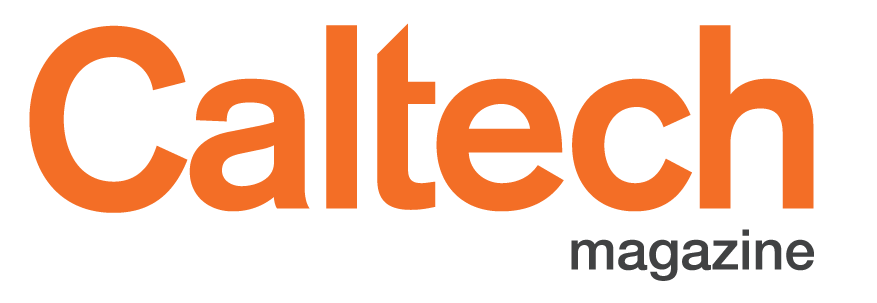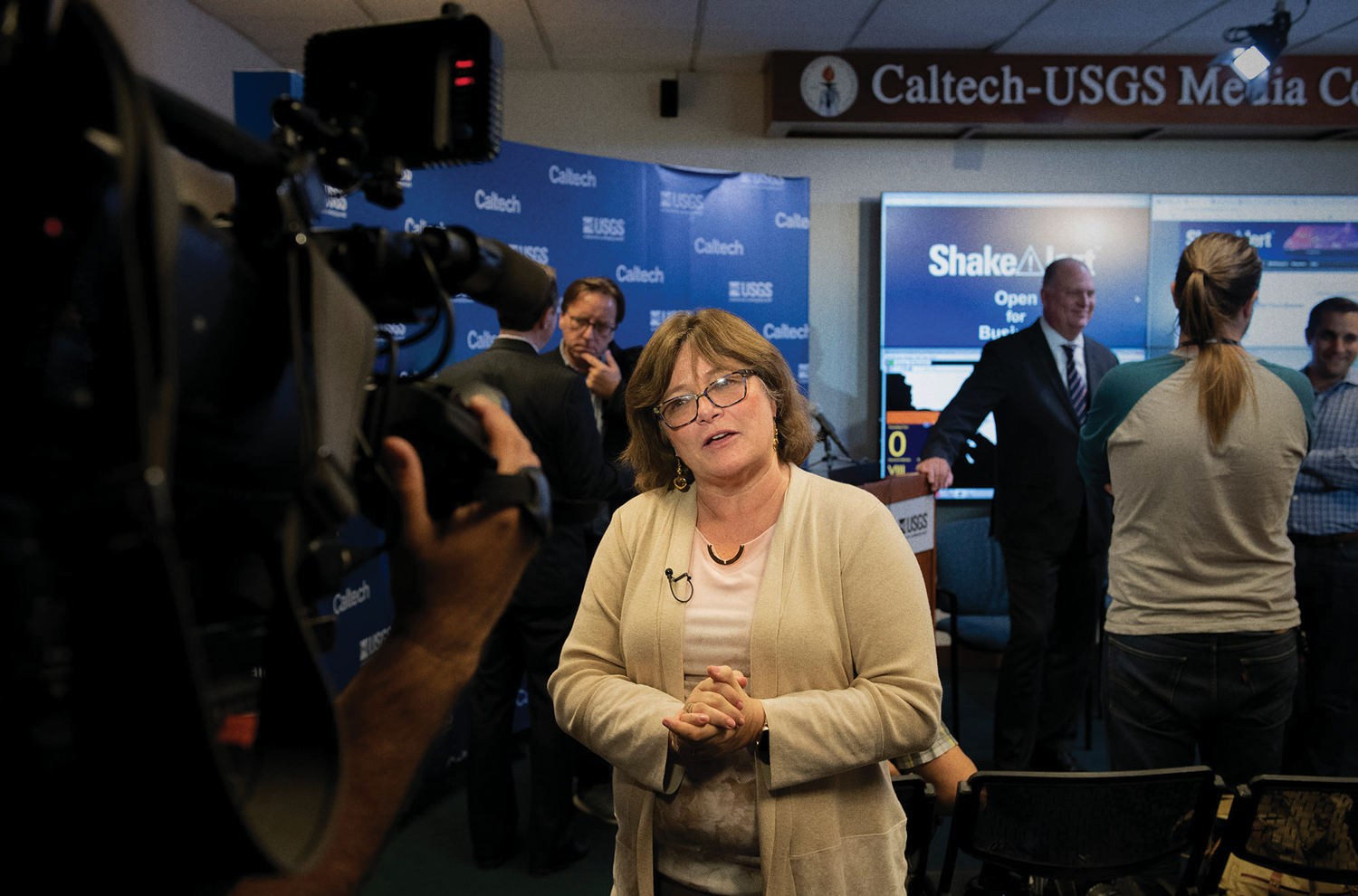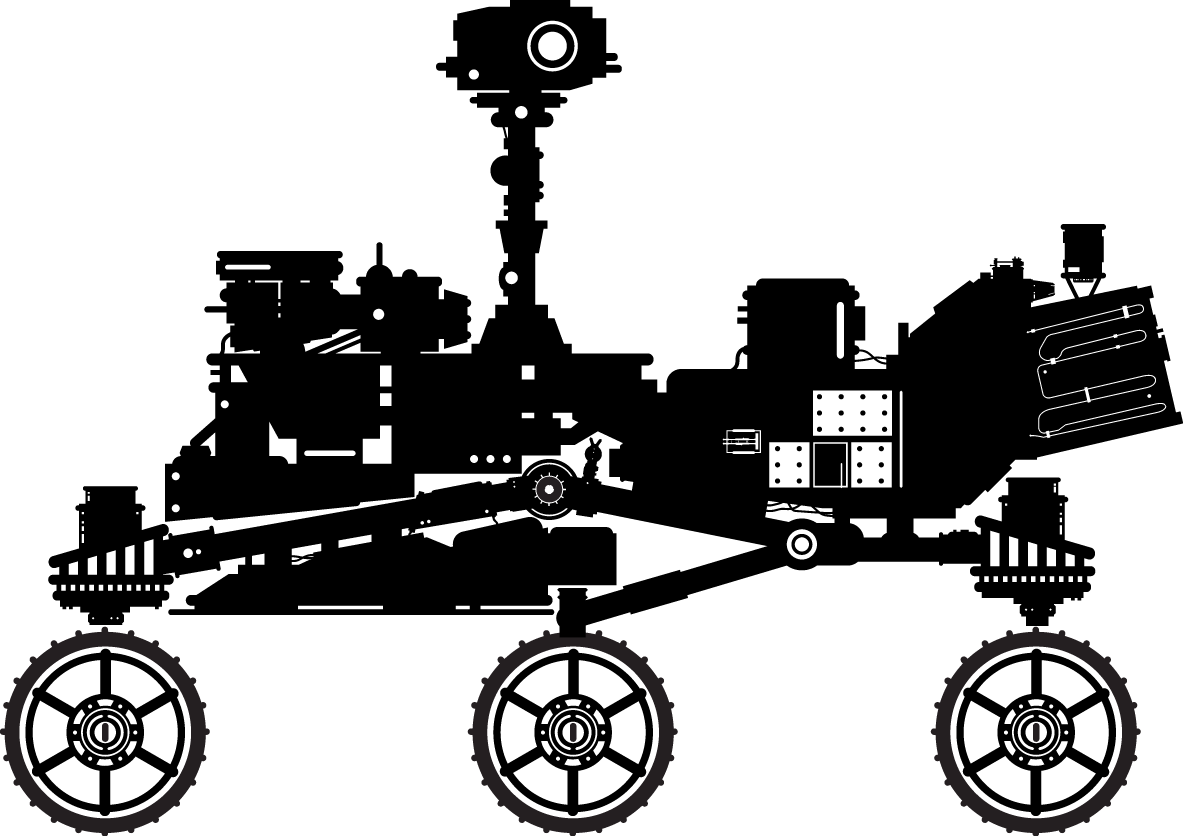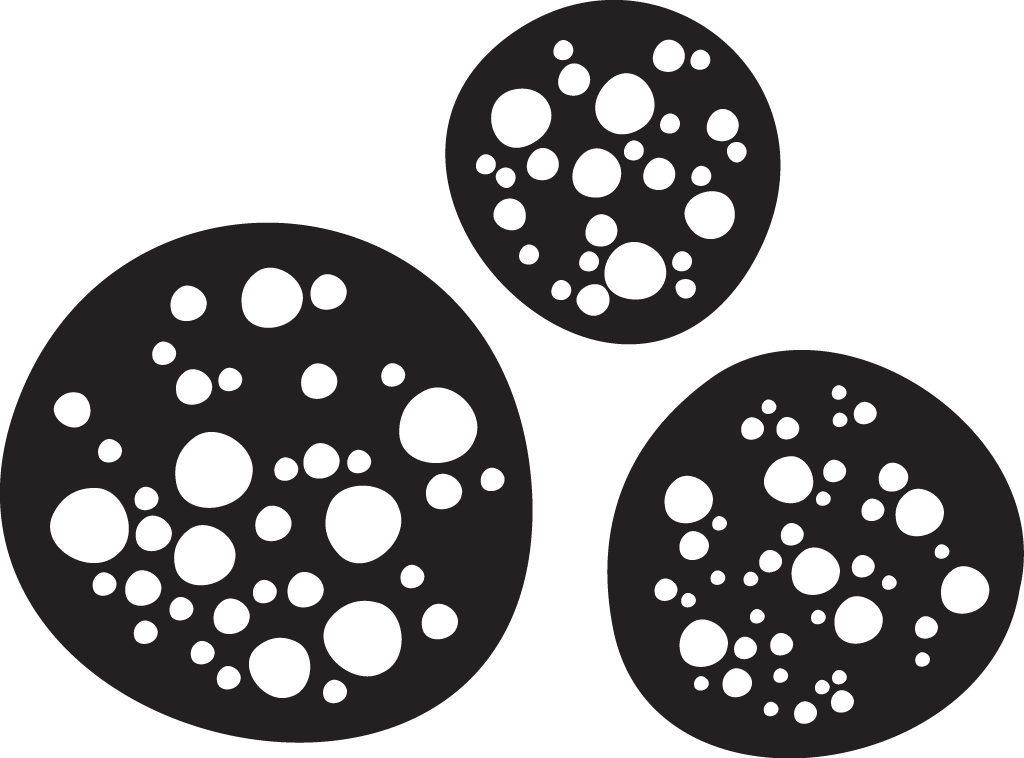Where Perseverance Meets Discovery
Illustrations by: Lance Hayashida
On the power of cathedral-building in science.
By Andrew Moseman
One way or another, Hirosi Ooguri says, string theory will be put to the test. The concept, which suggests one-dimensional vibrating strings are the fundamental particle of the universe, will be proven or disproven through experimentation. The thing is, Ooguri says, it might take 2,250 years to do.
To explain, Ooguri proposes a little thought experiment: Only two years elapsed between the arrival of quantum mechanics in the 1920s and the proposal of quantum field theory, a theoretical framework that enables the field of particle physics to jibe with Albert Einstein’s special relativity, the famous E=mc2 theory that explains the relationship between energy, mass, and the speed of light. But it took another 50 years to fully construct the standard model of particle physics, and a further 40 to verify that model experimentally via the discovery of the Higgs boson.
By comparison, it took 50 years just for physicists to propose the idea of string theory as the way to unite quantum mechanics with Einstein’s general relativity, the theory that adds the complicating factor of gravity to special relativity. (Caltech’s John H. Schwarz, the Harold Brown Professor of Theoretical Physics, Emeritus, is regarded as a founder of string theory.) As Ooguri points out, one could take this to mean that the string theory problem is 25 times harder than quantum field theory. Therefore, it stands to reason that the next steps—building a theoretical model and proving it via experiment—might also take 25 times as much time: i.e., a cool millennium apiece.
Of course, Ooguri, Caltech’s Fred Kavli Professor of Theoretical Physics and Mathematics and the Kent and Joyce Kresa Leadership Chair of the Division of Physics, Mathematics and Astronomy, does not really believe scientists will be in the dark until the 43rd century about whether string theory is a path to the one true “theory of everything.” His back-of-the envelope estimate is meant to prove a more general point: Solving big problems takes a little perseverance. Or, sometimes, a lot.
This basic truth underlies the mission to answer the big questions in astronomy, biology, chemistry, renewable energy, and every other field of scientific endeavor. In 2016, Caltech professor of planetary science Konstantin Batygin, together with Mike Brown, the Richard and Barbara Rosenberg Professor of Planetary Astronomy, Terence D. Barr Leadership Chair of the Center for the Center for Comparative Planetary Evolution, and director of the Caltech Center for Comparative Planetary Evolution, proposed that certain celestial motions in the far reaches of the solar system could be explained by a heretofore-unseen Planet Nine. The two have spent much of the last decade refining calculations to better pinpoint where such a planet might be found. Whenever that starts to feel like a long time for a planet hunt, Batygin likes to remind himself of how long other such “hunts” have taken. For instance, a century passed between Albert Einstein’s suggestion of gravitational waves and their detection by the National Science Foundation-funded Laser Interferometer Gravitational-wave Observatory (LIGO), a Caltech–MIT collaboration whose success led to the 2017 Nobel Prize in Physics.
“Nature has no obligation to reveal itself to us on timescales that we want,” Batygin says. “It’s going to take as long as it’s going to take.”
That kind of stick-to-itiveness abounds at Caltech, where researchers are known for their willingness to tackle audacious challenges that others might avoid, even when the answer or the solution might not come during the scientist’s career—or their lifetime—if it is ever worked out at all.
In fact, perseverance is not tied to a specific project or line of inquiry; it is the essence of science itself. The quest for knowledge is unending because every achievement—and setback—yields new questions. It may have taken LIGO a century to prove Einstein right, but that did not mean its scientists stopped investigating gravitational waves. By the same token, research that aims to advance society must also persist despite experiments that fail, missions that are scrapped, and necessary tools that have yet to be invented.
Get Me Off This Rock
Scientists whose work requires data gathered from space often rely on expensive and ambitious telescopes and satellites, which have to be conceived and then built before they can even begin to collect the data they need to interrogate cosmic mysteries.
When Mark Simons joined the Caltech faculty in 1996, fresh out of graduate school, he was keen on the idea of using a tool called a synthetic aperture radar to image Earth in unprecedented detail. At the time, he was assured that NASA would attempt to launch an SAR satellite within the next three years given everything that could be learned via this technology. It took 30.
Simons, Caltech’s John W. and Herberta M. Miles Professor of Geophysics and director of the Brinson Exploration Hub, has seen countless false starts on the way to the launchpad. Today, he is a science team member and the co-lead for solid earth science on the NASA-ISRO Synthetic Aperture Radar (NISAR) satellite mission, an orbiter that is poised to deliver the data Simons has sought since Seinfeld was on the airwaves. NISAR will help protect communities around the world by providing a dynamic view of how the earth moves in three dimensions with unprecedented detail and measuring the signatures of some of the planet’s most complex processes, including seismic events, ice-sheet and glacier flows, natural hazards, sea-level rise, and groundwater issues. On July 30, 2025, NISAR was launched into orbit aboard the Geosynchronous Satellite Launch Vehicle Mark II rocket used by the Indian Space Research Organisation. “For all of us who deal with space missions, waiting is the name of the game,” Simons says. “But when you finally get the data you yearned for, it all becomes worth it.”
Engineer Harry Atwater is similarly well acquainted with these kinds of grand challenges, which he compares to “cathedral building.” Centuries ago, with no modern equipment and with artisans painstakingly carving pieces by hand, many of Europe’s iconic gothic cathedrals were under construction for decades if not centuries. Grandfathers laid the foundations for projects their great-grandchildren would complete. Atwater says it is certainly possible to tackle a problem whose solution could change the world, knowing full well that you may not even be alive to see it cross the finish line.
Atwater is involved in many projects, including as one of the principal investigators working on the Space Solar Power Project (SSPP) alongside Caltech’s Sergio Pellegrino and Ali Hajimiri. Its goal is to collect the Sun’s energy in orbit, where there is no worry of interference from cloud cover or nightfall, and beam it back to Earth. The Caltech SSPP team launched a demonstration mission in 2023 that managed to do just that, proving the concept could one day work on a much larger scale. Atwater also heads the Liquid Sunlight Alliance (LiSA), a multi-university partnership to develop liquid fuels that could displace fossil fuels by combining carbon dioxide and water in chemical reactions powered by sunlight.
“As my career went along, my conviction to take on these kinds of grand-challenge problems rose,” Atwater says. “Maybe it comes down to thinking about your own finite abilities and your own mortality—that as long as you have a limited amount of time and resources, you should attack the most challenging problems.”
Most importantly, Atwater says, perseverance requires action. Rather than sitting idly by, scientists must figure out what next step a particular problem requires and create “cycles of learning,” wherein lessons learned feed into the next iteration of a project or prototype. “Sometimes, the learning goes from nonexistent to primitive to partial rather than complete,” Atwater explains.
Earlier in his career, Atwater spent decades developing improved thin-film photovoltaics (materials that convert light into electricity) that are cheaper, lighter, more efficient alternatives to previous bulky cells used in solar panels. Now, his solar cell work continues as part of SSPP, for which he is developing ultralight high-efficiency photovoltaics optimized for space conditions and compatible with an integrated modular power conversion and transmission system. “Those cycles of learning are very important,” he says.
Shake It Out
Lucy Jones talks to media atthe ShakeAlert launch event in 2019. Credit: Caltech.
Seismologist Lucy Jones says her 1983 arrival in Southern California was perfectly timed. Now a visiting associate in geophysics, Jones came to Caltech as a researcher with the U.S. Geological Survey (USGS) at the cusp of a dozen years of particularly strong seismic activity. The 1987 Whitter Narrows earthquake reached a magnitude of 5.9, and the devastating 1994 Northridge quake scored a 6.7. After so much shaking, Jones, now the founder of the Lucy Jones Center for Science and Society, believed the Big One was right around the corner. “I really thought when I came here that the big San Andreas earthquake would happen during my career,” she says.
Instead, little has changed since the 1980s. Jones is certain that the Big One will happen and that, thanks to the work done over these many years, seismologists will be at the ready. But, she acknowledges, that time could come tomorrow … or 50 years from now. And so, Jones has learned to be at peace with that uncertainty. “We don’t get to make our own experiments,” she says. “We have to wait until the earth gives us what it’s going to give us, and then we figure out how to make use of it.”
In order to be ready when an event does occur, seismologists at USGS and the Caltech Seismological Laboratory have partnered for decades to develop tools like the Southern California Seismic Network (SCSN), which is made up of more than 400 seismic stations throughout Southern California. These sensors have provided valuable datasets that researchers have analyzed in order to, among other things, compare today’s events to those in the past. These sensors also enable ShakeAlert, an earthquake early warning system launched in California in 2019 that is now used in Oregon and Washington as well, to provide seconds or even minutes of warning to facilities and the public before shaking starts. Paired with automated responses that will shut off gas lines before shaking starts, ShakeAlert helps prevent the fires that typically damage cities after a major earthquake.
While other work continues, Jones knows that the information from the Big One will help scientists enormously in their quest to understand what is happening deep within Earth and make society more earthquake resistant for the future. However, she has learned better than to seem to publicly root for a shake. “I went on the Conan O’Brien show at one point, and I said, ‘I’ve gotten down to just hoping that I live to see it.’ And he said, ‘We’ll agree to disagree on that one.’ He was right. But the thing is: I’ve done a bunch of papers along the way, hypothesizing about what’s going to happen with the big earthquake on the San Andreas, and the only way I’ll know if I’m right is if I live to see it.”
Get Me Off This Other Rock
The Mars 2020 Perseverance rover, a mission led by JPL, which Caltech manages for NASA, is aptly named. If there is anything that requires perseverance, it is imagining, building, and then landing a rover on the surface of another world.
Ken Farley next to a mass spectrometer in his lab. Credit: Lance Hayashida.
Ken Farley, the W. M. Keck Foundation Professor of Geochemistry at Caltech and the Perseverance rover’s project scientist, helmed the team of scientists and engineers who were charged with figuring out how to build a rover that could survive the harsh Martian environment and accomplish the mission’s science goals. But no matter how prepared you feel, unpleasant surprises emerge in the run-up to launch day, Farley says. In the case of Perseverance, it turned out that the caps on the rover’s sample collection tubes did not fit. “Absolute panic ensued,” Farley recalls, “because we were way too far downstream for this not to work.”
The team got down to work and, well, persevered. Eventually, they figured out that heating the tubes to kill any Earth-borne life and prevent contamination had warped the tubes’ shape. At the eleventh hour, the team devised, in Farley’s words, “an extremely aggressive solution that solubilizes the organics.” This method allowed them to sanitize the tubes and circumvent the need for heat. That was far from the mission’s only speed bump, of course. After all, its scheduled launch date was July 2020, which meant Farley and company had to navigate a space launch amid the height of the COVID-19 pandemic, navigating social distancing, Zoom calls, and more.
Farley understands the importance of stepping back and recognizing that each forward step along the way is part of a continuum of discovery. “The pathway to Perseverance actually goes back decades,” he says, referencing the influence of all the NASA missions that put orbiters around Mars and rovers of growing complexity on its surface. A cornerstone of Farley’s perspective has been learning to see experiments, studies, and missions as more than binary successes or failures—and knowing not to pin a project’s worth on whether it discovers what you had anticipated. While we hope Perseverance will one day find further evidence of Mars’s historic habitability, evidence of its absence will be instructive too. “Science isn’t about discovering something specific,” he says. “It’s about learning the way the world works. If you find no evidence for life, that itself is important.”
Sticking to the Plan
Taking one scientific step forward at a time has created a lifetime of curious exploration for Marianne Bronner, Caltech’s Edward B. Lewis Professor of Biology and director of the Beckman Institute. Bronner studies neural crest cells, a kind of stem cell that can develop in many different directions to form peripheral neurons and support cells, heart tissues, or even cancer cells. Because vertebrates have neural crest cells and invertebrates do not, learning more about these cells can help researchers understand how they contribute to the evolution of complex body forms. Bronner notes that, unlike putting a probe in space, there is no “finish line” to this work. Rather, it speaks to the way basic science adds to our body of knowledge in a way that other scientists can later build upon.
For instance, following the discovery that stem cells can migrate to the heart and form cardiac muscle, Bronner’s lab published a paper showing that zebrafish, which can typically regenerate heart tissue that has been lost, cannot do so if its neural crest cells are killed off. This year, Bronner and colleagues sought to find neural crest cells in the heart of a jawless fish called the lamprey—and failed. They stuck with it, however, and eventually found the cells in an organ called the endostyle located in the necks of larval lampreys; the endostyle develops into the lamprey’s thyroid as it grows. Ultimately, this finding helps explain the evolutionary origin of the thyroid and underscores the importance of neural crest cells.
“We call it delayed gratification,” Bronner says. “Especially in biology, because it’s so very complex, we never get complete answers about the mechanisms of how things work. We get partial answers, and they get more and more detailed. But you can keep working at progressively more finely tuned levels. You have to pose your question in a way that you can get a reasonable answer you can have confidence in, but you also have to realize that you’re never going to understand everything.”
The Psychology of Perseverance
The question of why humans persevere with a particular project over long periods of time despite numerous challenges piqued the curiosity of Sneha Aenugu, a graduate student in the lab of John O’Doherty, the Fletcher Jones Professor of Decision Neuroscience. “This question has been understudied because most psychology or neuroeconomics experiments deal with one-shot decisions,” Aenugu says, “which is strange, because our goals are often like that. Typically, they are not accomplished in a day or so; rather, it takes time, and the world does not stay constant in that time.”
In 2025, Aenugu and O’Doherty published a paper in PLOS Computational Biology about a game they designed to test how people decide to persist with one long-term goal or strategy even when it might be beneficial to switch to another. Aenugu compares the experiment to one of her favorite board games, Settlers of Catan, where one player who is pursuing a particular strategy to accumulate points by building the longest road might notice another player doing the same thing, forcing the first player to decide whether to abandon their original strategy and try something else. As a whole, Aenugu and O’Doherty found, players tended to stick with the original plan even when it was not the optimal strategy. And it turned out that this happened more often with humans than with the various algorithms Aenugu programmed to play the game. Perseverance, as it turns out, is part of human nature. “When participants start making progress toward a goal,” she says, “they value it higher.”
Batygin, the astronomer, still places high value on Planet Nine, and he says the newly opened Vera C. Rubin Observatory in Chile might finally allow astronomers to spot it. But it is also possible the planet is too dim even for a telescope with better mirror design, camera sensitivity, and speed than any that have come before. It is also possi]ble that Rubin’s field of view in the Southern Hemisphere simply does not include the area where Planet Nine is hiding. Either case would be instructive, Batygin says. In the meantime, he is busy working to unravel some of the other mysteries of the cosmos, like the makeup of the interior of Jupiter, or unanswered questions about the gravity of objects in the Oort Cloud far beyond Pluto. “Every time I’m working on a new problem, that problem is the most important thing in the universe,” he says.
Batygin and others credit Caltech for allowing them the freedom to explore those mysteries, which, he says, makes it easier to persevere through intellectual journeys full of frustrations and wrong turns. The long game of discovery—or learning, as Farley prefers—requires patience from both scientist and institution, and the belief that big dreams can be achieved, even if it takes generations, because the journey itself is the point.
“I’m very much an optimist,” Atwater says. “Maybe I’m a naïve-ist there as well. But I think some combination of optimism and purposefulness is important. If you were pessimistic about everything, you probably wouldn’t be in the research game.”







